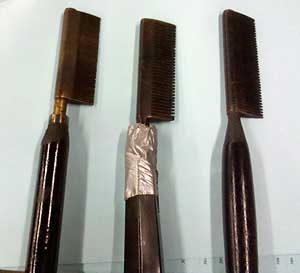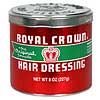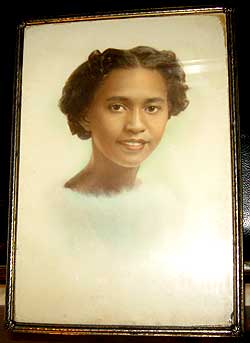The image is amazingly clear: A little girl sits on the floor or a stool between her mother’s legs, her head a mass of unruly hair. Her mother sits behind her in a chair, close enough to the stove to reach the tool that will tame her child’s natural hair but not too close to burn either of them.
Lying on an open gas flame on the stove is a tool of mass destruction – the straightening comb, or hot comb. Once heated, the mother combs the iron through the girl’s hair to make it straight and silky like the American standard of beauty, not coarse like her ancestors’ in Africa. Nearby on a table is a small red container of Royal Crown Hair Dressing, because mom needed oil to fry the hair.

That little girl was most any African American child of the last mid-century. Many of us have this image imprinted in our brains. We wiggled and cried and screamed as our mothers or older sisters tugged at our coarse hair to make it into “good hair.” Sometimes, they’d just straighten the front edges (or the back – the kitchen, as we called it in my home in the South) when they had defiantly reverted to their naturally tight curly state.
In some homes, straightening a girl’s hair was a day (or night)-before Easter ritual. And the process was not without its perils: burnt ears, burnt scalp or burnt hair.

I hadn’t seen or thought about a straightening comb in years until I saw three recently at auction. They had thick heads and fat bodies, maybe a later version of the ones I remembered. When I was a child, I had an aunt who was a beautician and I can still see all the tools of her trade, including the straightening comb and curling iron.
Anyone could straighten hair, but only a pro could curl it. My aunt seemed to have magic in her fingers as she went through the process of using a curling iron on a head of hair. She’d deftly part a section of the hair and place the curling iron just short of the scalp. With one hand, she’d work her fingers in rapid-fire motion on the handles as she fed the hair into the curling iron with the other. It was astonishing to see a perfect curl come from such a haphazard procedure.
Madame C.J. Walker was the one who made straight hair popular for African American women but she was not the first. In fact, she had been an agent selling products for a woman named Annie Malone before she started her own company. Malone created her own products and redesigned a metal hot comb that had been popularized by French stylist Marcel Grateau to create waves for women in Paris. Walker also created her own hair-pressing product (after dealing with a loss of her own hair through another ritual of trying to straighten it) and re-structured the comb.
Practically everyone straightened their hair: Black women on the covers or inside pages of Ebony and Jet magazines proudly displayed their soft silky hair. It was the epitome of beauty until the “Black Power” and “Black is Beautiful” movement that showed us that there was absolutely nothing wrong with our coarse hair, thank you.
At the auction, I wasn’t around when the straightening combs sold. Since they were part of a box lot, I’m sure they went for only a buck or so.

After spotting the irons, I came across an item in another room that showed the power of straightening combs and hair dressing. Propped on a shelf on a wall was a framed photo of a girl who looked like she had just stepped out of a beauty parlor in the mid-20th century. It was a lovely photo that actually resembled a painting. It seemed to have been touched up.
I’m sure that she, too, had a good story to tell about how she arrived at her nice ‘do.
